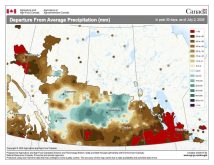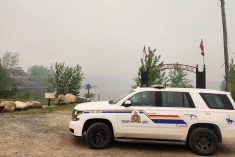Last issue’s forecast turned out to be a bit of a bust. The models kind of got things right, but the timing of the weather systems ended up getting way out of sync, making the forecasts not very useful.
For this forecast period, the confidence in the forecast is pretty high, but not for a good reason. It is looking more and more like we will see cold arctic air dominating our region, which usually results in a fairly straightforward forecast: cold and dry.
After a nice weekend and start to the week, the weather models show a large area of arctic high pressure slumping southward into Alberta, then sliding southeastward through Saskatchewan and into the northern states by the end of the week. We will see mostly clear skies and cold temperatures with daytime highs in the -20 to -25 C range and overnight lows falling to the -30 to -35 C range. Winds might be an issue and with these cold temperatures, it won’t take much wind to bring cold warnings to most regions.
Read Also

Thunderstorms and straight-line winds
Straight-line winds in thunderstorms can cause as much damage as a tornado and are next on our weather school list exploring how and why severe summer weather forms.
Over the weekend, the return flow around the departing arctic high will try to pump slightly milder air across our region, but this will only be temporary as a second arctic high looks poised to drop southward followed by a third arctic high early next week. Even if the timing of these highs is off, it won’t really matter, as it is just going to be plain old cold. Temperatures look to continue to run at or below the bottom end of the usual temperature range for this time of the year.
Looking further ahead there is a small sign that milder air might work into our region late next week (Feb. 9-10), but there are also signs that more arctic air is getting ready to drop southward. It is looking more and more likely that February will be a cold one this year!
Usual temperature range for this period: highs, -21 to -5 C; lows, -32 to -14 C.




















